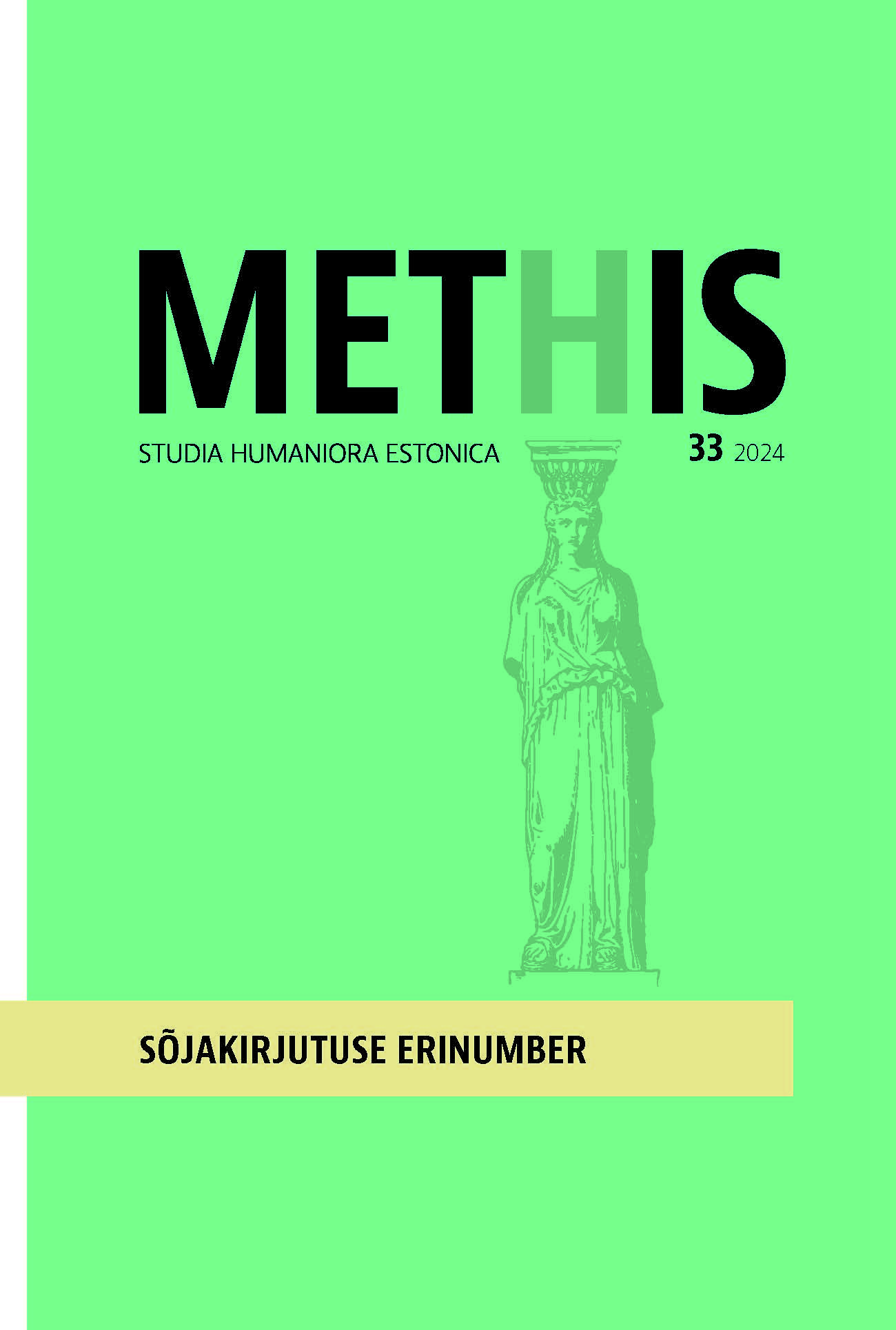Eesti sõjakirjasaatjad Vabadussõjas / Estonian War Correspondents in the War of Independence
DOI:
https://doi.org/10.7592/methis.v26i33.24127Keywords:
war correspondents, propaganda, journalism, Estonian War of Independence, sõjakirjasaatjad, Eesti ajakirjandus, VabadussõdaAbstract
Teesid: Eestis loodi sõjakirjasaatjate institutsioon ametlikult kindralstaabi ülema polkovnik Jaan Sootsi määrusega 23. märtsil 1919. aastal. Riiki esindanud Sootsi määrus oli vastukaaluks varasemale ajalehetoimetajate ettepanekule sama aasta 15. märtsist. Kahe idee peamine vahe seisnes selles, et rahvaväe juhtkond soovis endale õigust sõjakirjasaatjate ametisse kinnitamisel ja rindejoone läheduses nende liikumise üle otsustamisel, ajakirjanikud olid aga vastupidisel seisukohal. Mingit ametlikku rolli propagandistidena Eesti sõjakirjasaatjatele ette nähtud ei olnud. Sõjakirjasaatjad kajastasid rindesündmusi võrdlemisi objektiivselt, propagandistlikke artikleid nad ei rahvaväe juhtkonna õhutusel ega omal algatusel ei kirjutanud.
“The age of the war reporter”, as Patricia Clarke called it, started with the Boer War at the turn of 19th century. During the First World War, propaganda became crucial for states and armies. Propaganda was used as a weapon against enemy states and in hope of influencing the home population. As Kevin Williams states in his study, the leadership of the British Army and the government saw the purpose of war reporters more and more as propagandists. Correspondents were under heavy scrutiny to see and hear only what the military leadership wished them to.
This article focuses on the possibility that the same situation applied to war reporters during Estonia’ 1918–1920 War of Independence. From November 1918, a number of newspapers that were already familiar to readers, as well as new ones, began to appear. Supporters of the Republic of Estonia had an ever-expanding range of daily newspapers from both political parties as well as state-funded publications. The Estonian press was subject to military censorship from the beginning of the War of Independence.
Attempts were made to block newspapers from the hostile parties. The official newspaper of the Bolsheviks was banned at the beginning of December 1918 by a decision of the Provisional Government and subsequently appeared as an illegal underground publication. From the end of 1918 to May 1919, and then again from August of the same year, the appearance of the socialist-revolutionary newspaper was also suspended.
Co-operating with censorship should have been propaganda – the gap created by banning the publication of ‘harmful’ positions should have been filled by more optimistic writing. According to the daily newspapers, messages from the frontline received less attention as the War continued. More space was reserved for social and economic problems. The decline in articles covering the War must have played a part, either in the deepening tediousness of war or in becoming accustomed to it. It was no less important that, as the fronts stabilised, there was no exciting news for readers.
Estonia’s institution of war correspondents was officially created on March 23, 1919. This was done to counter a proposition from author and reporter August Gailit on March 15, 1919. The main difference between the two ideas was that according to official rules, war correspondents needed approval from the army. Freedom of movement near the frontline was much more limited than Gailit had desired.
The question of whether this was propaganda is central to an analysis of frontline reports. In essence, the realism of articles from war correspondents must be taken into consideration. Undoubtedly, it should be borne in mind that military censorship did not leave its influence undisclosed. On the one hand, it is a question of the factual content in the events recorded. Did war correspondents write what they saw and what they heard from soldiers, or did they pass on official accounts? On the other hand, one can ask whether the writings reflected the various aspects of the War objectively, or whether they embellished events and situations without criticism. Also important is whether authors were able to focus on the events of war and convey reports of the situation on the fronts without plundering them into excessive, glorifying descriptions.
Among correspondents reporting on the War were several prominent authors, such as August Gailit, Karl August Hindrey, Henrik Visnapuu and Richard Roht. But journalists such as Voldemar Koch (later famous as Voldemar Kures) were also present. In general all of them used pseudonyms, for example, Hindrey was known as Hoia Ronk. The final number of war correspondents remains unknown, especially as several authors used pseudonyms that could not with certainty be matched to any of the correspondents. For this article, 64 available texts by war correspondents were analysed from the following newspapers: Maaliit (9), Postimees (12), Päevaleht (24), Tallinna Teataja (5) and Vaba Maa (14).
There is no evidence that the leadership of the army wished war correspondents to create propaganda. In their articles, correspondents remained relatively objective and did not become propagandists of their own accord. Instead, several authors took a humane or humorous approach to reporting from the War, possibly helping increase citizens’ trust in the newly emerged Republic of Estonia.


